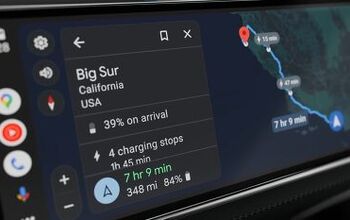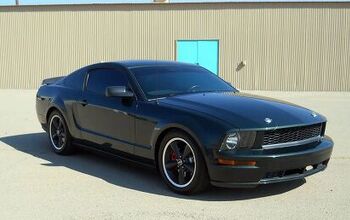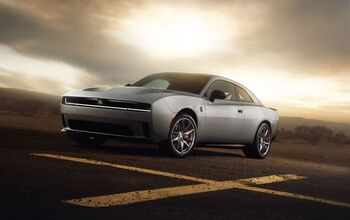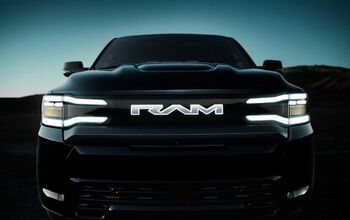General Motors Death Watch 148: You Can't Fix Stupid
Clearly, nothing about the United Auto Workers (UAW) proposed contract with GM is clear. Until we see the precise details, the agreement's ramifications are unknown and unknowable. Meanwhile, you'd expect the media to hang fire. Yeah right. "For GM, deal is a game changer" proclaims the Globe and Mail. "GM Labor Deal Ushers In New Era for Auto Industry" the Wall Street Journal advises. "Deal gives GM cash to build better cars" predicts The Detroit Free Press. Scanning these Pollyanna prognostications, the Freep provides the greatest insight. Not because I believe a word of Mark Phelan's thesis. Because I don't.
I reckon the UAW's new contract will not deliver one dime of short-term savings to GM. If anything, it will add to their overheads– especially the interest on the money that will pay for the multi-billion dollar union-controlled VEBA health care superfund). This has been the pattern since GM CEO Rick Wagoner started his campaign to trim his employer's overheads to match their falling income. Wagoner announces plant closures and union buyouts that transfer costs from now to later. Why would this new contract be any different? As Frank Williams pointed-out, the contract calls for a "targeted special attrition program" for "non-core workers."
But let's assume Phelan's giant leap of faith is correct and [for reasons I can't possibly fathom] this new contract reduces GM's labor costs by $2k per car produced (presuming GM's output hasn't declined further since he wrote the piece). Is the scribe right to suggest that GM would– sorry, "will" use the extra cash to build better cars? Could this really be a turning point, where GM rides to glory on the back of a product renaissance? In a word, no.
In any discussion about GM's future, you have to consider the unavoidable truism that you can't fix stupid. In other words, no matter how much more money GM spends on improving its products, it runs the [usual] risk of spending the "extra" money on the wrong cars, in the wrong way, with little of nothing to show for it. When it comes to creating competitive product, financial resources are key. But a coherent strategy is more important. And a healthy corporate culture is the most important element of all. In this case, one out of three sucks. To wit:
Building a down market Caddy is stupid. Selling two different versions of the same CUV in the same dealership (Buick Enclave, GMC Acadia) is absurd. Rebadging a Chevy Trailblazer as a SAAB 9-7x is dumb. Sticking a $65k Corvette next to a $13k Aveo in a Chevy showroom is idiotic. Building a Corvette-engined folding hardtop pickup truck (SSR) is seriously misguided. Letting the Pontiac Grand Prix rot on the vine for a decade is asinine. Selling better Buicks in China than the US is ridiculous. And so on.
Now you could posit that these mistakes are somehow cost-related. And you'd be wrong. An extra $2k lavished on any of these vehicles would not have corrected the underlying strategic blunders that led to their realization. As Phelan himself points out, the fact that GM could sell the new, improved Cadillac CTS for the same price as the previous model puts paid to the "we don't have enough money to build competitive models" argument.
We've spoken before about the all-conquering corrosiveness of GM's multi-divisional corporate culture. The automaker is a labyrinth of beancounters and middle managers whose interdepartmental skills make Kafka's nightmarish bureaucracy seem like a well-run America's Cup team. It's important to realize that this kind of diseased corporate culture spends resources with all the efficiency and effectiveness of a government agency.
When I moved to the UK, the Labor party had the same answer for every problem: more money. When they assumed power, they raised taxes and spent the money. And… nothing. Anyone who holds the belief that an extra billion or two or five pumped into GM's stultified product development process will be a "game changer" is sorely mistaken. The money would– sorry, "will" disappear down the same rat hole that currently swallows GM's development cash and produces substandard, bone-headed products.
Fortunately, not all journalists are lining-up at the GM water cooler to drink the company's Kool-Aid. Like many TTAC commentators, some news outlets are pointing out that GM CEO Rick Wagoner's post-strike comment– "This agreement helps us close the fundamental competitive gaps that exist in our business"– finally puts his ass on the line. By his own admission, Wagoner can no longer point to labor costs as the weights around GM's ankles preventing it from running with (ahead of?) the Toyotas, Hondas and Nissans of the world.
Yes, well, there's still Japanese currency manipulation, the mortgage crisis, a general economic downturn and all the other excuses the company has been trotting-out since GM found itself having to explain why its indeterminate turnaround plan has failed to gain traction. Look for more of the same.
Well exactly. GM's new union contract– if ratified– will not save the automaker from its fundamental weaknesses. Going forward, in 2008, GM will be in for a long, tough slog, warmed only by its own cash conflagration. During this time, GM's labor costs will not come down dramatically, its health costs will not be reined in and its Hail Mary products won't save its soul.
More by Robert Farago
Latest Car Reviews
Read moreLatest Product Reviews
Read moreRecent Comments
- Peter I want a self driving red ragtop 1958 Plymouth Fury. Just like the car in the movie Christine.
- Mgh57 Doesn't seem like this tech is ready for prime time.
- Nathan The Ram is the most boring looking of the full size trucks, kind of like a Tundra.If they cancel the Ram Classic, I hope a full resign makes the Ram at least look interesting.
- DJB1 I'll be all for it when it has a proven safety record. I have an awesome life and a lot to live for, so right now I'm not putting that in the hands of overconfident tech-bros.
- Mgh57 I had to read the article because I had had no idea what the headline meant. I've never seen this in the Northeast. Don't understand the point. Doesn't seen efficient aerodynamically


































Comments
Join the conversation
"In the auto industry, you’re selling a fashion statement, as much as you’re selling a technical object. Look at how the cars at this very site are slammed, or championed, for their appearance. Of course, that is not unique to TTAC. It’s how people are about automobiles in general." "That’s why the late Marshall McLuhan called cars “the mechanical bride.” Just as a woman attracts you, at first, because of her appearance, so too does a car. And as a woman continues to appeal to you because of her intellect and humor, so too does a car have to show some substance." With respect, I'm not sure this is an accurate description of cars or car buyers today - on average. Toyota, Honda, and Nissan all seem to run most of their vehicles through a dullifier at the end of the assembly line, yet they can't produce them fast enough. I do think it works in reverse though - what I mean is if a vehicle is horribly ugly (as distinct from merely dull) I think people will avoid it. I got my first look at Ford's new Super Duty Trucks this weekend. I'm not in the market for a large PU, but if I were, I'd avoid those things at all costs. They make the Dodge Ram look stylish and well proportioned. Overcompensating is what I'd think about any man driving a new Ford SD.
Some good points made in the article and in comments above but I must disagree with the idea that GM will not take advantage of the eventual lower labor costs contained in the UAW deal. As you all know, GM uses product costs prominantly to drive their product plan. This is one reason why many recent GM vehicles have cheaper interiors, etc. Lower labor costs would help margins on future products either pushing more into profitability or allowing the product team to choose high quality componenets and material. Sure, GM decision making about product could still be considered faulty but the new UAW deal will help GM make both better and more profitable vehicles.